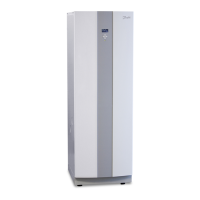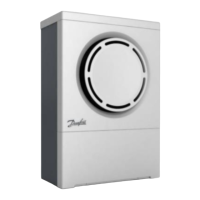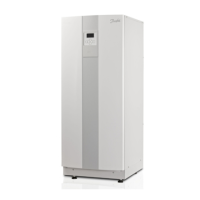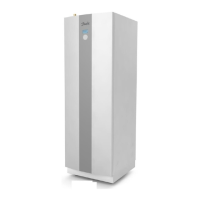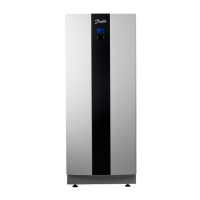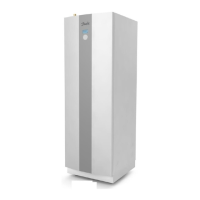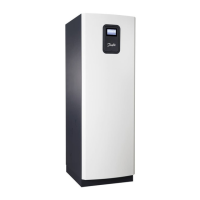Problem – Noise – miscellaneous
Cause Troubleshooting Remedy
1. Vibrating protective sleeves on the pres-
sure switches.
Establish where the vibration noise is com-
ing from.
Prevent the protection sleeve vibrating by
using insulation tape for example.
2. Vibration noise from the electrical instal-
lation.
Check for electrical steps or similar devices
screwed to the heat pump and wall. These
can cause vibrations and noise.
Carry out according to the installation
instructions.
3. The heat pump is not level. Check that the heat pump is level by using
a spirit level.
Check that the heat pump is supported by
all four feet
If the heat pump is not level, adjust using
the feet.
HOT WATER
Problem – Temperature and/or quantity
Cause Troubleshooting Remedy
1. Defective 3-way valve motor. Check the function of the 3-way valve, that
it runs between the end positions by run-
ning a manual test.
If the motor is defective, replace it.
2. Jammed 3-way valve insert.
The valve is not secure and releases hot
water to the radiators during hot water
production.
Detach the motor and test closing and
opening of the valve by pressing the con-
trol arm
If the insert jams, remove and clean it, or
replace it.
3. Air in TWS coil or water outer jacket. During hot water production:
•Listenforair.
•Checkthetemperaturedifference
between supply and return line.
Bleed the system.
A Large temperature difference can indicate
air in the system.
4. Start temperature set too high for hot
water production.
Check that the start temperature is correctly
set. Should not be set above the factory set
value.
•Ifthestartvalueissettoohigh,reduceit
to the factory set value.
•Ifthesystemhasahigh(>+8°C)brinetem-
perature, you may have to reduce the start
value further for a longer running time.
5. Sensor fault, hot water sensor.
Hot water production is started by the hot
water sensor.
Check what the hot water sensor (the start
sensor) shows, is it a plausible/actual value?
Measure the resistance of the sensor, check
against the ohm table in the Measurement
points section.
If the sensor is defective, replace it.
6. Large drain flow (>12l/min). Check how many litres of hot water (approx.
40°C) per minute drains from the tap. Use a
clock and bucket to measure the drain flow.
If the drain water flow is greater than 12l/
min, stratification in the water heater is
affected, which reduces the hot water
capacity.
Suggested corrective actions:
•Installapressurereductionvalveonthe
incoming cold water pipe.
•Changetoamixerwithlowerflow.
•Adjustthedrainflowontheexistingmixer,
do not open the tap fully.
7. Water heater too small in relation to
requirement.
How large is the requirement and what is
the capacity of the heater?
Replace with a larger heater or supplement
with an extra heater.
E.G. supplement with an MBH TWS or an
electric heater.
8. The operating pressure switch opens too
soon (at too low a pressure).
Hot water production ends when the oper-
ating pressure switch opens.
Check the break pressure using manometer
apparatus.
If the pressure switch opens at the incorrect
pressure, replace it.
The replacement pressure switch can be
installed on the service output (Schrader
valve)

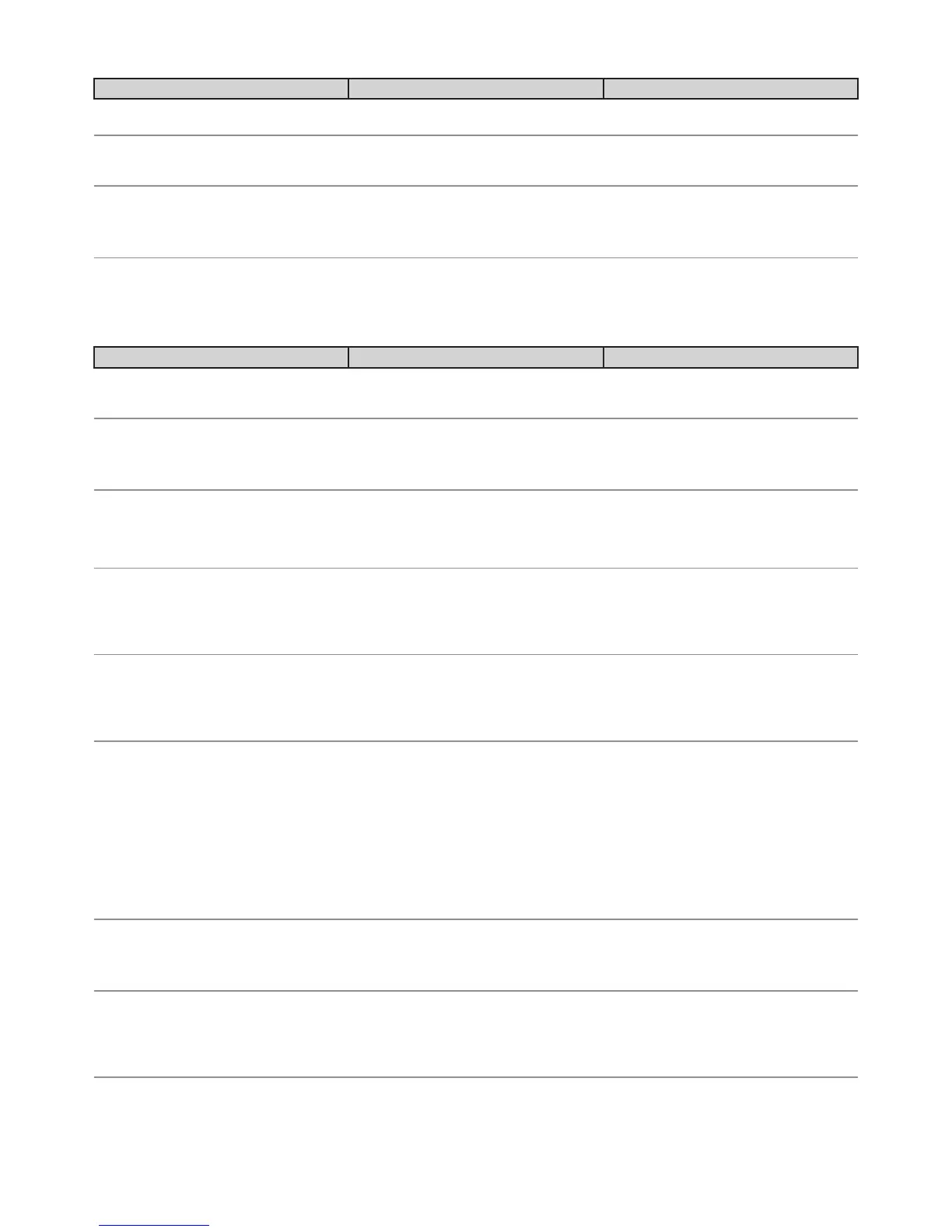